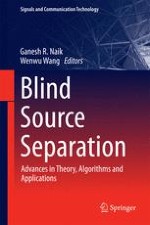2014 | OriginalPaper | Chapter
2. Blind Source Separation Based on Dictionary Learning: A Singularity-Aware Approach
Authors : Xiaochen Zhao, Guangyu Zhou, Wei Dai, Wenwu Wang
Published in: Blind Source Separation
Publisher: Springer Berlin Heidelberg
Activate our intelligent search to find suitable subject content or patents.
Select sections of text to find matching patents with Artificial Intelligence. powered by
Select sections of text to find additional relevant content using AI-assisted search. powered by
